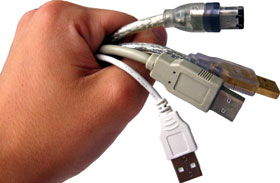

Just as security systems are often considered a grudge purchase, it would seem that the same brush tars maintenance service level agreements and contracts. Is a maintenance service level agreement (SLA) worth the paper on which it is written, or should you just call out a technician when something goes wrong with your system?
Reinhard van Rooyen, director at Gryphon Communications, said that currently there are very few maintenance SLAs in place in South Africa. “The large corporates tend to implement SLAs, but the biggest issues to date have been with non-performance on proposed turnaround times and performance levels. More often than not, most companies seem to be content with conducting ad hoc maintenance.”
Quinton Govender, director of Trinity Technologies added that companies want to feel that there is some perceived value to a maintenance SLA before they commit their money. “It is critical that companies undertaking maintenance, whether it is the original installer/integrator or a third party, approach maintenance as part of a long-term, mutually-beneficial relationship with the client. The contract should provide the user with optimum uptime and productivity.”
Willem Visser, group asset protection manager at AVI, believes that the success of a maintenance SLA depends on the situation endemic to each company. “If they do not manage their security equipment proactively, an SLA, whereby an installer undertakes regular maintenance checks and ensures the system is functioning, is a good idea. However, if they are effectively managing their system, they could merely log a call to correct any issues on an as-needed basis.”
Van Rooyen and Govender differ on whether security equipment maintenance is a reality. “While I believe it should be a reality, it is most definitely not,” said Van Rooyen. “Unfortunately, there is little or no housekeeping on security equipment. This is exacerbated by inferior installations. We also find that systems are accidentally or maliciously interfered with, causing issues with operability. These issues could be easily overcome with the implementation of a maintenance SLA.”
To SLA or not?
He added that in questionable maintenance issues, in order to maintain a healthy relationship with a client, the supplier or installer/integrator will often uphold warranty claims, but when wilful interference or negligence is apparent, the supplier or installer cannot be held liable. “Sadly, most maintenance is reactive rather than proactive.”
Govender said that due to the increasing pressure brought to bear by both demands from insurance companies and compliance with safety, health, environment and quality (SHEQ) regulations, maintenance is most definitely prioritised. “Companies expect maximum performance from a system in which they have invested a great deal of capital, so the drive to maintain it is an overriding factor.”
Van Rooyen feels that there is a definite lack of post-installation SLAs. “Sadly, in such an extremely competitive market, suppliers and installers/integrators are too often subjected to abuse by clients. The economic pressure has resulted in a more discerning and cost-conscious market that carefully weighs cost against risk. Often the scales tip in favour of saving money in the short term. Ironically, this instant monetary gratification can have extremely serious financial implications when a system fails due to lack of maintenance.”
“Post-installation SLAs are becoming increasingly commonplace but they are not always instituted by the original installer or integrator,” argued Govender. “We are seeing a trend, especially with public sector contracts that are put out to tender and generally awarded on pricing, that the support levels are not always evident. Add to this the fact that the client in these instances is often unaware of the importance of checking and maintaining the security equipment. The degradation of systems is inevitable. Enter a third-party maintenance company on a white steed, ready to save the day and bring the system back to its former glory.”
On the dotted line
Both Govender and Van Rooyen agreed that a maintenance SLA should be detailed, but easy to interpret, without any ambiguity about responsibility and onus. The SLA should be customised to take the client’s specific installation risks and requirements into consideration.
How detailed an SLA is depends on the system that is installed. “An IP-based system has built-in health checks that regularly provide the user with feedback on the status of the equipment. However, the use of an IP-based system does not preclude the necessity of regular proactive maintenance,” said Van Rooyen.
As a cost-saving exercise, some companies choose to perform their own maintenance. “Smaller companies often follow this route. This is not necessarily a bad thing, but the client’s maintenance team needs to be adequately trained, as a reasonable standard of skills levels is critical. An alternative route is to place outsourced technical people on site on a contractual basis. This will ensure that the support, management and risk transfers to the consultant,” said Van Rooyen.
“I personally do not believe this is the advisable course of action. Maintenance of security systems is highly specialised and unless you have access to a dedicated, highly trained technical component in your workforce, the money you apparently save on flying solo is often lost when the system fails,” said Govender.
“Suppliers and systems integrators need to guard against accepting responsibility for shoddy installations by considering the formation of a parallel private independent and neutral advisory body that could regulate the industry, in collaboration with PSIRA. Industry could provide valuable input in terms of both knowledge and expertise to offer training and certification for installers in line with global standards. Maintenance issues would be reduced, and together with an SLA, would result in increased profitability for users,” said Van Rooyen.

© Technews Publishing (Pty) Ltd. | All Rights Reserved.